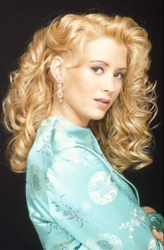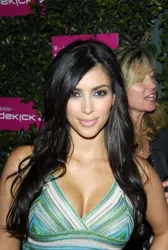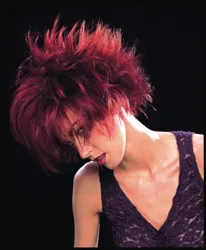
Secrets Of Professional Haircolor At Home
Secrets Of Professional Haircolor At Home
Many people wish to color their hair, but due to the economic climate or other issues can't visit a professional hair colorist.
As a licensed hairstylist I strongly advise that people find a way to utilize the advice of a professional colorist, if nothing else, to help select the appropriate shade, type of formulation and manufacturer.
If you can't afford to hire them to professionally color your hair, ask if they might consider selling you a custom blended color system for use at home under their supervision. When possible, try to achieve professional haircolor at home.
Explain your current financial situation to your regular hairdresser. Ask them to help you color at home since you're unable to do so at the salon. Many hairstylists will offer suggestions on whether to go with a permanent or semi-permanent color, what shades to consider with regard to your base color and your best DIY color options.
Feel your hairdresser out before you ask for their advice. Keep in mind that many hairdressers offer professional color services as part of their business so some may resist helping you unless you have a very good reason.
Some will offer you a package deal or discount on their services to make sure you don't go a dangerous DIY route. Others may offer minimal color coverage to keep the cost within your budget.
Options
When you can't afford to pay a professional colorist and your hairstylist is unable or unwilling to help you do your color at home, you can look into local cosmetology schools.
Many schools offer a full range of color services which are provided by only the most advanced students and fully supervised by a teacher or senior staff member.
Another options often overlooked is to become a hair color model for cosmo student's or high end salons. Granted, this is a more risky option, but it offers discounted hair color services and the possibility of making a long term connection with a new salon or colorist.
Do Your Research
Regardless whether you get professional hair color advice from your hair stylist, go to a cosmetology school or serve as a hair color model, arm yourself with the best color know-how.
Understand whether you should opt for permanent, semi-perm or temporary rinse-out hair color. If covering stubborn grey is your goal, permanent color is best. Ditto if you want rich, vibrant color with lots of shimmer and shine.
Remember, permanent color permanently alters your base color regardless whether it is first lifted with bleach or applied to your existing base.
Semi-perm color may not cover resistant gray and it only deposits color pigment on the top of the cuticle. Which means it fades away after 18-24 shampoo treatments depending on whether you use hot water and the type of shampoo you utilize.
Always known as demi-perm will enhance existing colors and can help to blend grays. If you have more than 25% gray hair permanent hair color is the only way to go for long term full coverage.
Select The Best Color To Complement Skin And Eye Tone
Once you've figured out the best type of hair color to embrace, make sure you take your time selecting the best color to complement your skin and eye tone. Avoid selecting a hair color which might bring out orange, yellow or sallowness in your skin.
Determine whether your skin is warm with dominant tones of peach, olive or gold or cool with shades of pink or red. Always utilize your skin tone to figure out which hair shade complements you best.
Remember that you will always get the best look if you stay close to your natural hair color.
Warm Versus Cool Skin Tones
If your skin is cool opt for warm ash or neutral hair colors which will contrast the pink tones in your skin. Great hues include champagne and beige blonde chocolate and espresso brunettes and auburn red.
If your skin is warm opt for gold or red hair colors which will help cool down your skin tone. Great hues includes honey blonde, strawberry, copper, golden brown, rich chestnut and mahogany.
Ultimately the best option when coloring your hair is to speak to a professional colorist or hairstylist for advice. Determine if you can work with them to meet your financial and/or other challenges.
Summary
If you can't work directly or indirectly with your professional colorist consider other options such as a cosmetology school or serving as a hair color model.
When all else fails, do your research in order to select the best shade for your skin and eye tones. Take your time, go slow and head for the drugstore hair color aisles.
Another option is using a custom blended coloring system, which has professional colorists that will find your most flattering shade.Social Media Network Information
Please follow us on Twitter at: https://Twitter.com/HairBoutique. I look forward to meeting new people from all walks of Twitter and learning from their Tweets.





















